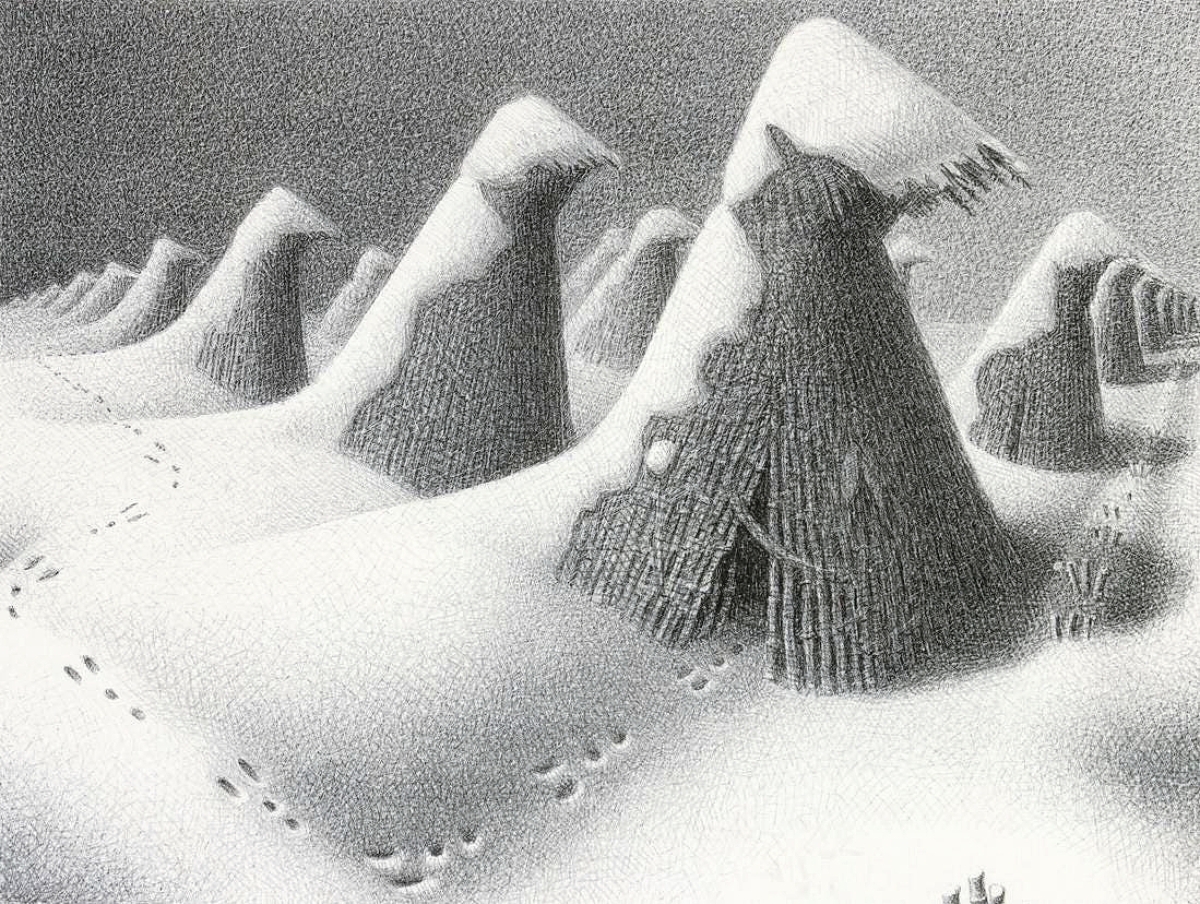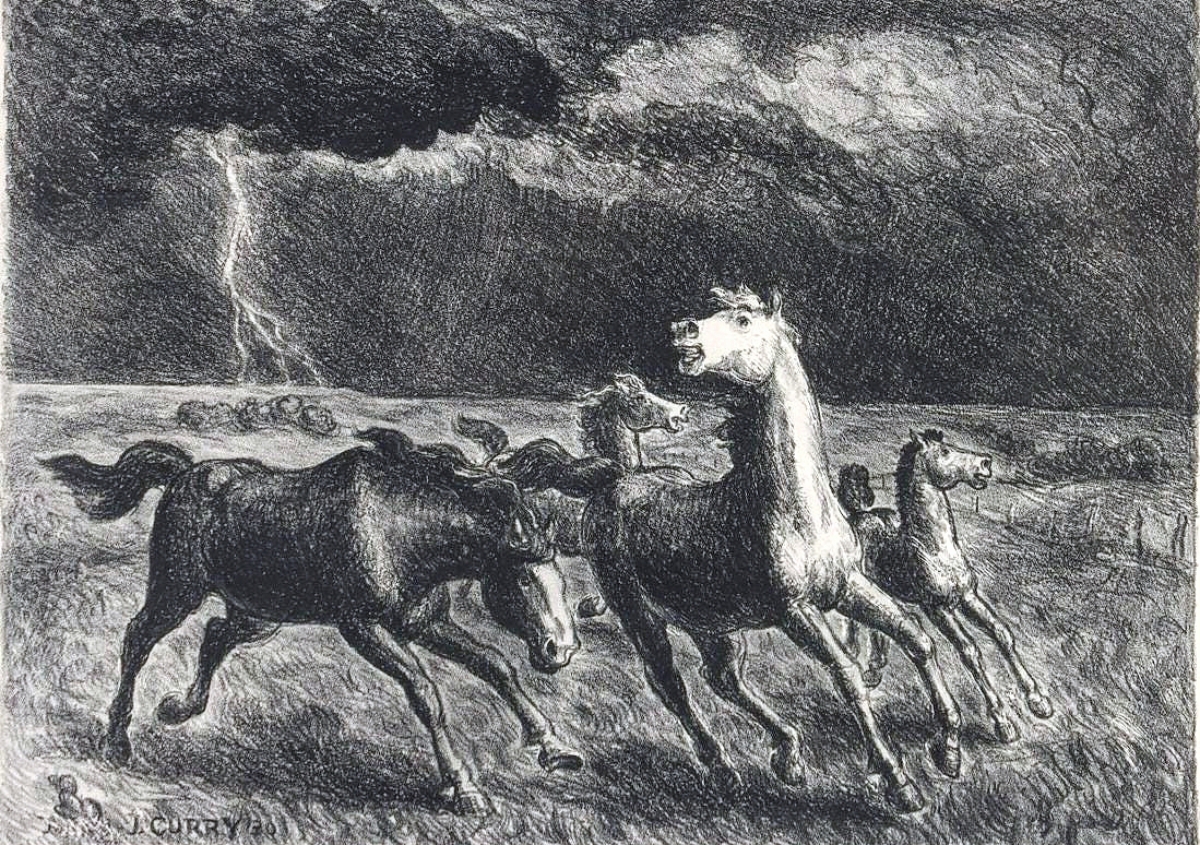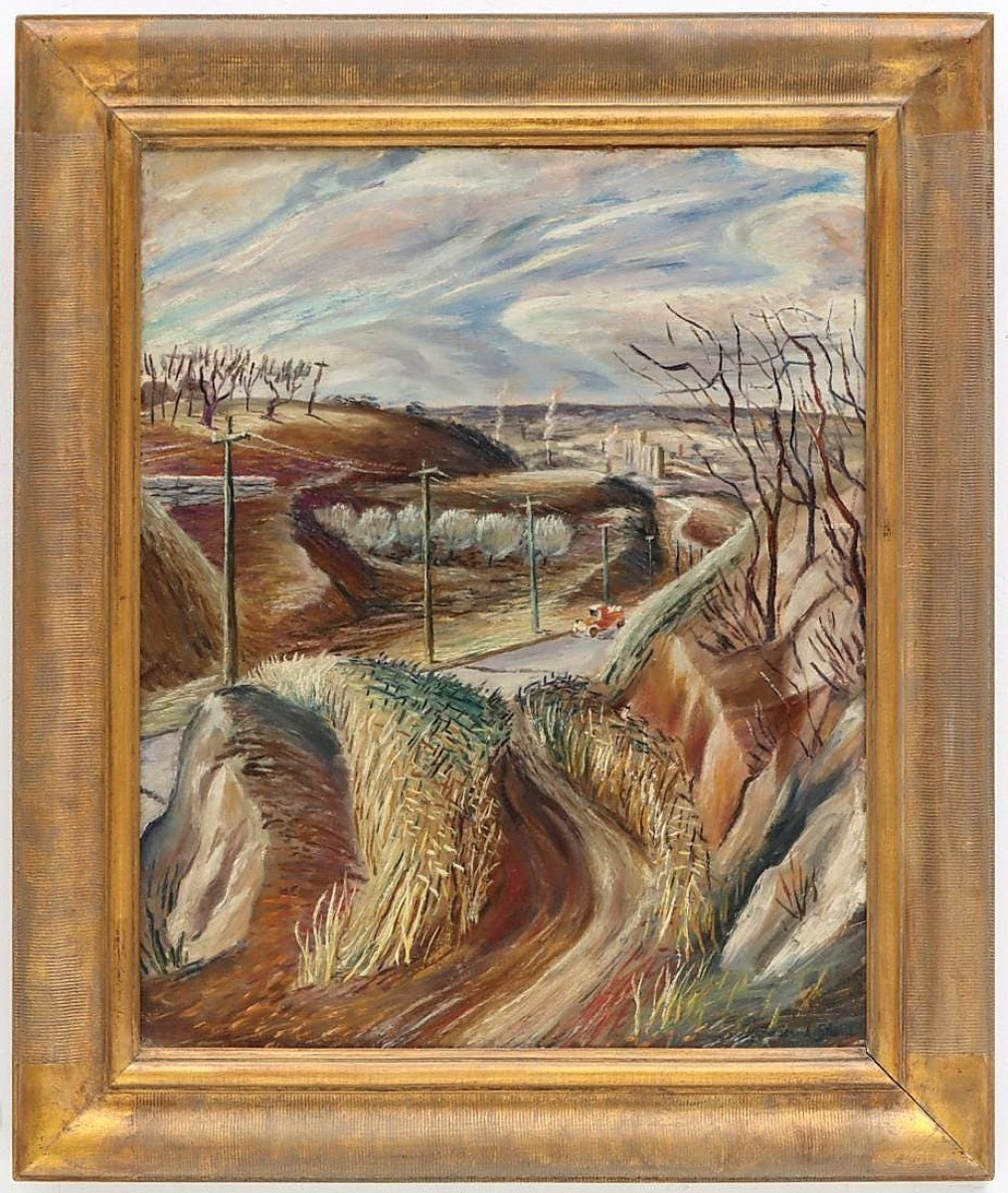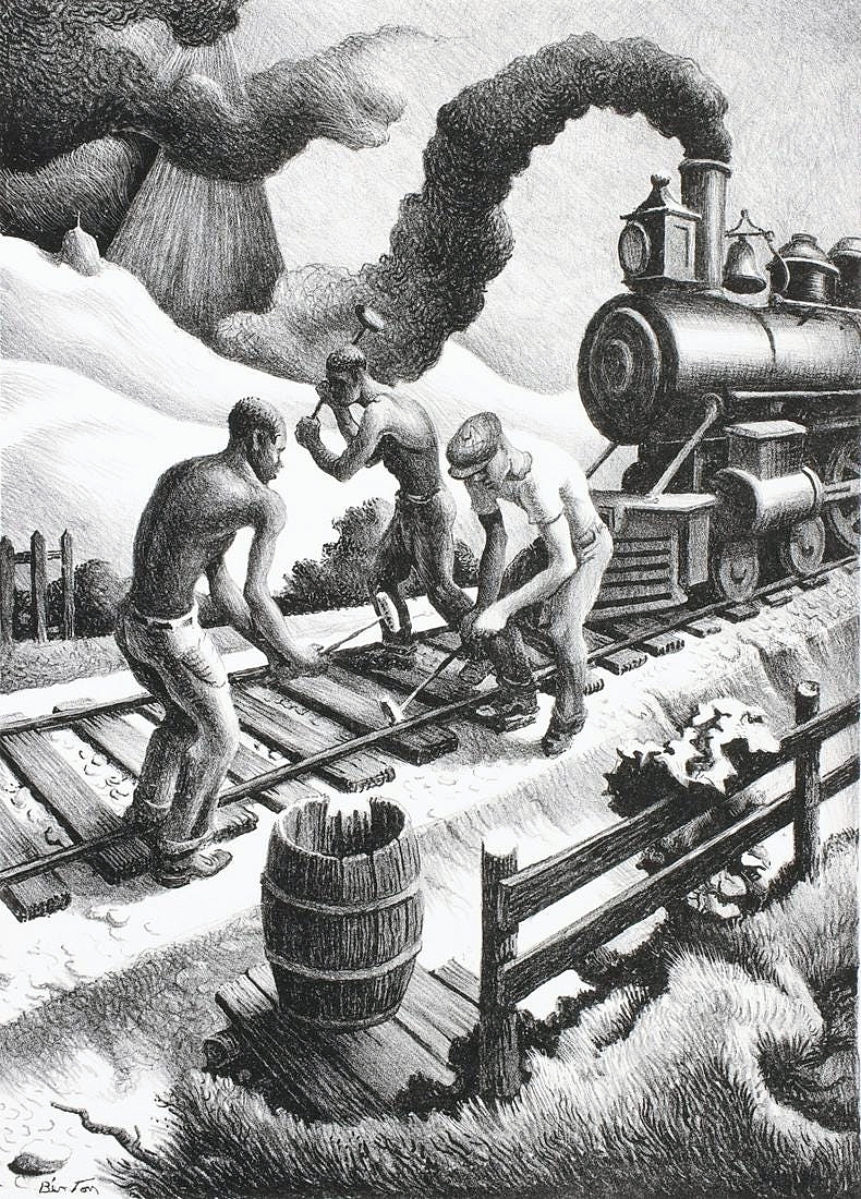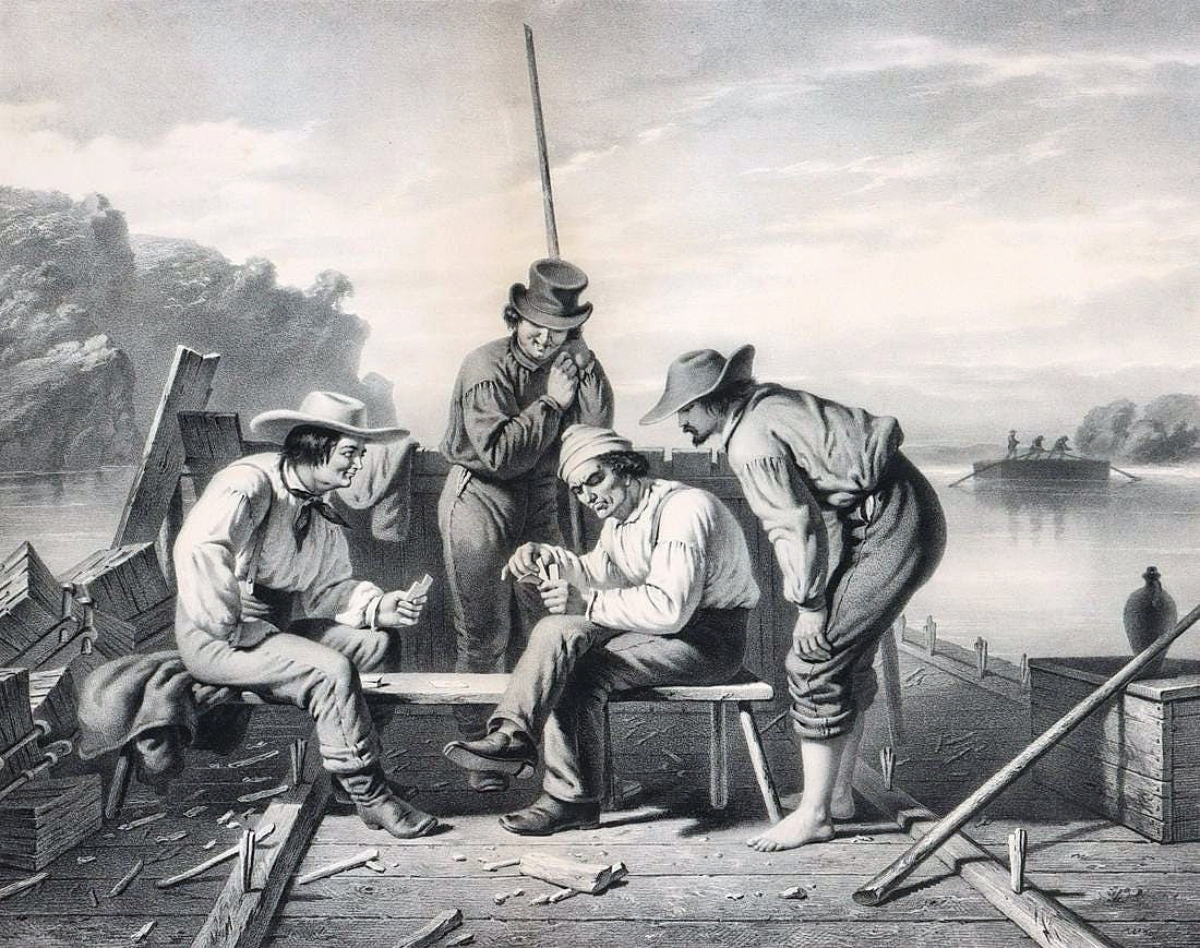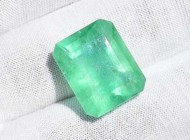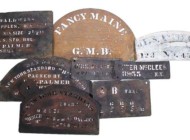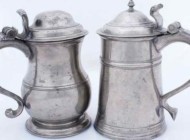
The sale found its leader at $154,000 for “Lake at Moonrise, Colorado” by Birger Sandzèn. The work, consigned from a Kansas collection and selling to a Kansas buyer, never strayed far from where it was made. Oil on board, 13½ by 15½ inches.
Review by Greg Smith, Photos Courtesy Soulis Auctions
LONE JACK, MO. – It’s not often a painting parlays its connections from Colorado and Kansas to Italy, but the works of Swedish immigrant artist Birger Sandzèn prove as boundless as the artist was. The son of Clara Carolina Elisabeth Sylvén, an accomplished watercolorist, Sandzèn studied in Stockholm under Anders Zorn before departing to Paris in 1984, where he discovered pointillism. That same year he would land in Lindsborg, Kansas, where he would live out the rest of his life. Just south of Salina, Lindsborg sits firmly in the middle-most region of the state, though still three hours west of Kansas City, where the artist’s estate found representation with the American Legacy Gallery. It was four hours east of the Colorado border, a landscape Sandzèn found magnetically enchanting.
A 1925 oil on artist’s board titled “Lake at Moonrise, Colorado,” sold for $154,000 at Soulis Auctions’ April 24 Annual Spring Fine Art auction. The work had been purchased at American Legacy Gallery and came from a consignor who provided a few works from the artist, including some in previous sales with the auctioneer. It measured 13½ by 15½ inches.
“It’s a birthday present and headed to a ranch in El Dorado, Kansas,” auctioneer Dirk Soulis said of the work. “The seller is taking her family to Italy with the proceeds.”
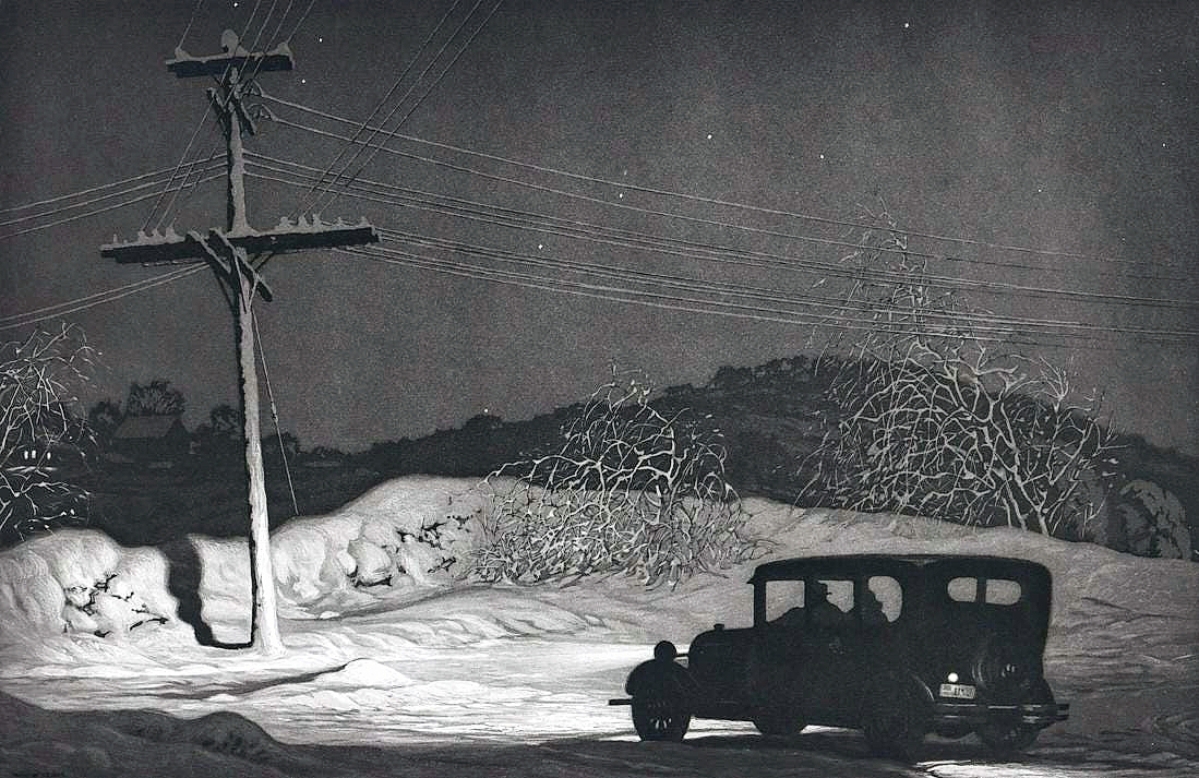
Martin Lewis titled this aquatint etching “Which Way,” as it depicts the uncertainty of a snow-covered road. The nightview, with provenance to The Old Print Shop in New York City, brought a fine price at $39,100.
As a painter with a palette reminiscent of the pastel-laden Amalfi Coast, Sandzèn would no doubt approve.
From the same consignor and by the same artist was the sale’s next highest lot, an oil on canvas depicting Canyon Lake, 24½ by 29¼ inches, that brought $39,600. “The view of a Western United States mountain waterway with rock formations similar to those in Sandzèn’s Moab, Utah, paintings from the 1930s,” the auction house wrote.
Known for his nightviews, an aquatint etching titled “Which Way” by Martin Lewis (1881-1962) went out at $39,100. The realistic scene featured a car with its headlights centered on a dead-end snow-covered landscape, unsure of the direction the road has turned before him.
Regionalism featured strong in the sale with works from Grant Wood (1891-1942), John Steuart Curry (1897-1946), Frederick Shane (1906-1992), Thomas Hart Benton (1889-1975) and his student, Joseph Meert (1905-1989).
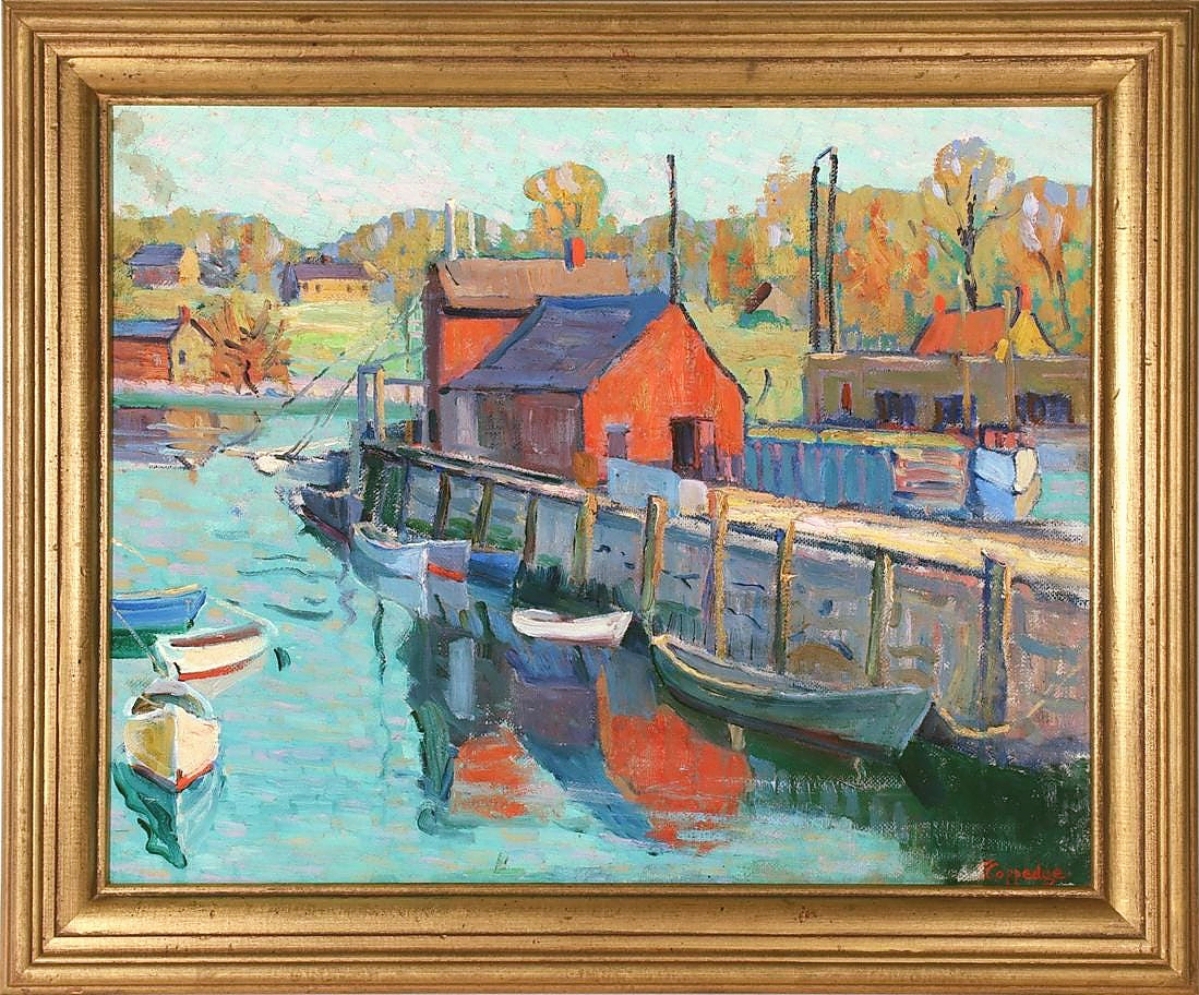
Soulis says this work by Pennsylvania Impressionist Fern Coppedge was a recent discovery. The subject is among the most prolifically painted in American history, “Motif #1,” the little red fishing shack in the Rockport, Mass., harbor. The oil on canvas measured 16 by 20 inches and sold for $33,000.
It was an egg tempera on canvas from Meert that would prove itself at $26,400. “Railroad Yards,” dated 1937, measured 28½ by 34¼ inches. Soulis wrote that the stretcher on the works features Meert’s address in Kansas City lined out and replaced with the address of the Kansas City Art Institute, where he served as Benton’s assistant. The work came to sale from a family that resided quite close to the Institute since 1962.
Lithographs from Benton found a winner at $9,350 for “Ten Pound Hammer,” a 1967 signed lithograph from an edition of 300. On the work, Benton noted that it was an “Old story from my youth – before the steam hammer beat out John Henry.” Coming in at $8,625 was “Prodigal Son,” a 1939 signed lithograph from an edition of 250. His “Slow Train Through Arkansas,” of the same medium, took $6,050.
A signed stone lithograph from Wood, “January,” featured a stark winter scene and went out at $5,280. Curry found favor at $8,800 for “Horses Running Before A Storm,” a 1930 lithograph from an edition of only 30.
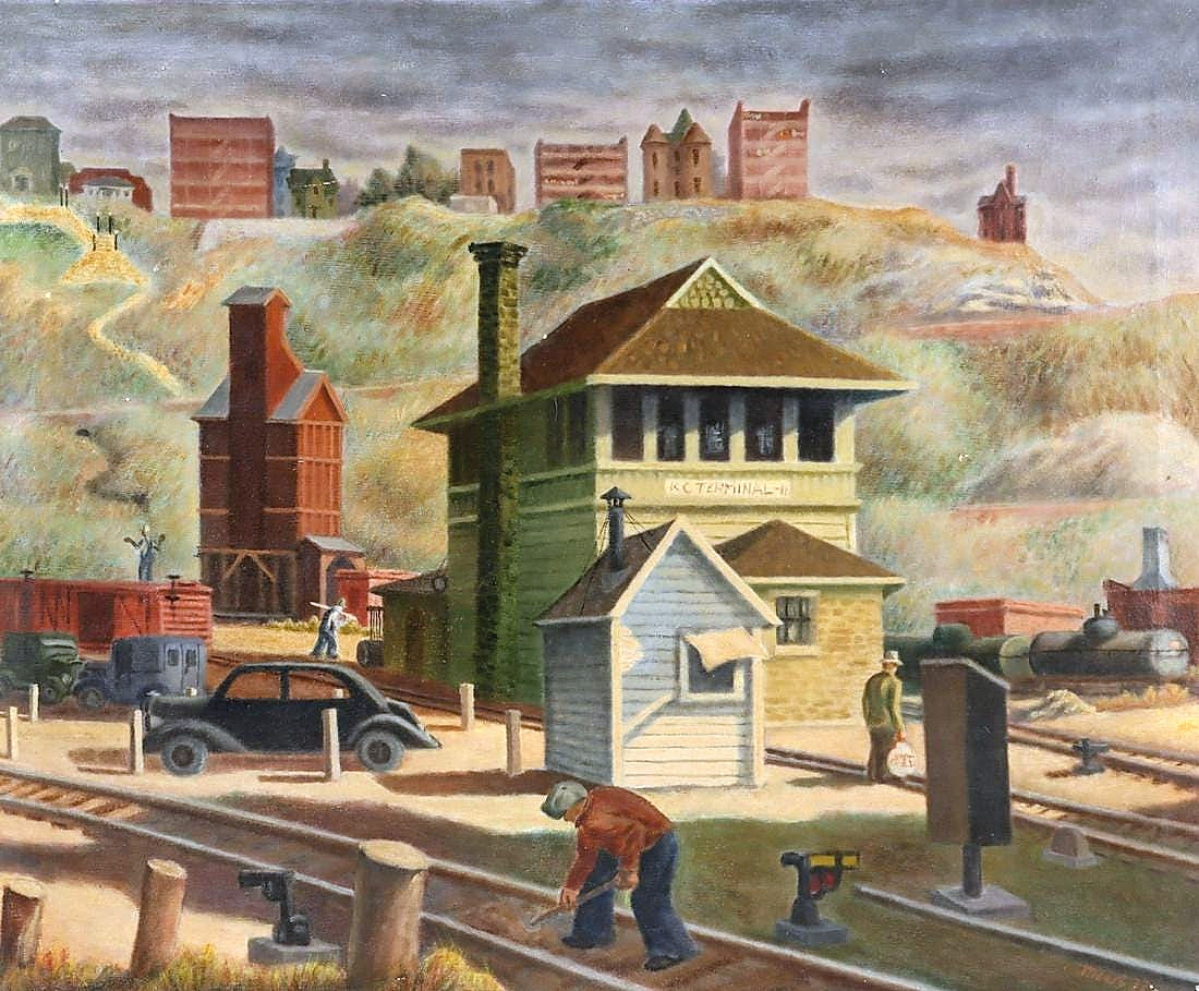
An egg tempera on canvas by Thomas Hart Benton’s student and assistant, Joseph Meert, would sell for $26,400. “Railroad Yards” was dated 1937 and came from a home not far from the Kansas City Art Institute, whose address is written on the back.
Frederick Shane’s circa 1933 “Distant Elevator” featured an elevated perspective of the Midwestern landscape. “Fred Shane is arguably the quintessential Missouri regionalist,” the auction house wrote. “His works mostly focused on rural Midwest genre subjects (and some Colorado scenes).” The oil on canvas, 32 by 26 inches, sold for $6,600.
All prices reported include buyer’s premium. For information, www.dirksoulisauctions.com or 816-697-3830.

